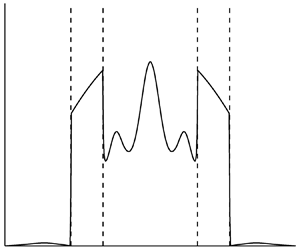Article contents
Evolution of weak, homogeneous turbulence with rotation and stratification
Published online by Cambridge University Press: 11 January 2024
Abstract

This article concerns the time-evolution, spectral structure and scaling of weak turbulence subject to rotation and stable stratification. The flow is expressed as a combination of particular solutions, referred to as modes, of the linearised governing equations without viscosity or diffusion. Modes are of two types: oscillatory ones which represent inertial-gravity waves and time-independent ones that express a non-propagating (NP) component of the flow. The presence of the NP component, which plays an active role in the dynamics apart from in the case of pure rotation, renders wave-turbulence analysis problematic because the NP mode is non-dispersive. Equations are derived for the time evolution of the modal amplitudes, evolution which is due to nonlinearity and visco-diffusion. Subsequent analysis assumes that one or other (or both) of the Rossby and Froude numbers is small (weak turbulence). Given this assumption, the NP component is found to evolve independently of the wave one and a numerical scheme, similar to, though significantly different from classical direct numerical simulation, is used to determine its time evolution. The treatment of the wave component assumes its amplitude is large compared with the NP one, otherwise there are seemingly intractable difficulties of closure in the analysis. Given this further assumption, the wave component decouples from the NP one. Evolution equations for the wave spectra are derived using wave-turbulence analysis and are integrated numerically. As might be expected, these equations indicate that nonlinear coupling of wave modes is dominated by resonances. Results are given for both the NP and wave components.
Information
- Type
- JFM Papers
- Information
- Copyright
- © The Author(s), 2024. Published by Cambridge University Press
References
- 6
- Cited by


